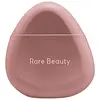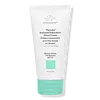What's inside
What's inside
 Key Ingredients
Key Ingredients

 Benefits
Benefits

 Concerns
Concerns

 Ingredients Side-by-side
Ingredients Side-by-side

Water
Skin ConditioningGlycerin
HumectantCetearyl Alcohol
EmollientMacadamia Integrifolia Seed Oil
Skin ConditioningButyrospermum Parkii Butter
Skin ConditioningNiacinamide
SmoothingPentaerythrityl Tetraethylhexanoate
EmollientSilica
AbrasivePolyglyceryl-3 Methylglucose Distearate
Emulsifying1,2-Hexanediol
Skin ConditioningPentylene Glycol
Skin ConditioningHydroxyethyl Acrylate/Sodium Acryloyldimethyl Taurate Copolymer
Emulsion StabilisingCetearyl Glucoside
EmulsifyingParfum
MaskingButylene Glycol
HumectantGlucose
HumectantCaprylyl Glycol
EmollientChlorella Vulgaris Extract
Skin ConditioningFructooligosaccharides
HumectantFructose
HumectantWithania Somnifera Root Extract
Skin ConditioningEthylhexylglycerin
Skin ConditioningTocopherol
AntioxidantSodium Hyaluronate
HumectantPrunus Persica Flower Extract
MoisturisingSodium Benzoate
MaskingCitric Acid
BufferingLimonene
PerfumingCoumarin
PerfumingLinalool
PerfumingWater, Glycerin, Cetearyl Alcohol, Macadamia Integrifolia Seed Oil, Butyrospermum Parkii Butter, Niacinamide, Pentaerythrityl Tetraethylhexanoate, Silica, Polyglyceryl-3 Methylglucose Distearate, 1,2-Hexanediol, Pentylene Glycol, Hydroxyethyl Acrylate/Sodium Acryloyldimethyl Taurate Copolymer, Cetearyl Glucoside, Parfum, Butylene Glycol, Glucose, Caprylyl Glycol, Chlorella Vulgaris Extract, Fructooligosaccharides, Fructose, Withania Somnifera Root Extract, Ethylhexylglycerin, Tocopherol, Sodium Hyaluronate, Prunus Persica Flower Extract, Sodium Benzoate, Citric Acid, Limonene, Coumarin, Linalool
Water
Skin ConditioningDicaprylyl Carbonate
EmollientCaprylic/Capric Triglyceride
MaskingSclerocarya Birrea Seed Butter
EmollientSqualane
EmollientGlycerin
HumectantButyrospermum Parkii Butter
Skin ConditioningCetearyl Alcohol
EmollientGlyceryl Stearates
EmollientCetearyl Olivate
Hydroxyethyl Acrylate/Sodium Acryloyldimethyl Taurate Copolymer
Emulsion StabilisingSorbitan Olivate
EmulsifyingPersea Gratissima Oil
Skin ConditioningSclerocarya Birrea Seed Oil
HumectantSimmondsia Chinensis Seed Oil
EmollientOleic Acid
EmollientPanthenol
Skin ConditioningAvena Sativa Kernel Flour
AbrasiveColloidal Oatmeal
AbsorbentPalmitic Acid
EmollientPropanediol
SolventLinoleic Acid
CleansingLinolenic Acid
CleansingTremella Fuciformis Sporocarp Extract
AntioxidantAllantoin
Skin ConditioningCeramide AP
Skin ConditioningCeramide NP
Skin ConditioningCeramide EOP
Skin ConditioningPhytosphingosine
Skin ConditioningCholesterol
EmollientStearic Acid
CleansingXanthan Gum
EmulsifyingCarbomer
Emulsion StabilisingVanilla Planifolia Fruit Extract
Skin ConditioningSodium Stearoyl Glutamate
CleansingCaprylhydroxamic Acid
Sodium Lauroyl Lactylate
EmulsifyingSorbitan Isostearate
EmulsifyingTocopherol
AntioxidantCitric Acid
BufferingPolysorbate 60
EmulsifyingCaprylyl Glycol
EmollientPhenoxyethanol
PreservativeEthylhexylglycerin
Skin ConditioningWater, Dicaprylyl Carbonate, Caprylic/Capric Triglyceride, Sclerocarya Birrea Seed Butter, Squalane, Glycerin, Butyrospermum Parkii Butter, Cetearyl Alcohol, Glyceryl Stearates, Cetearyl Olivate, Hydroxyethyl Acrylate/Sodium Acryloyldimethyl Taurate Copolymer, Sorbitan Olivate, Persea Gratissima Oil, Sclerocarya Birrea Seed Oil, Simmondsia Chinensis Seed Oil, Oleic Acid, Panthenol, Avena Sativa Kernel Flour, Colloidal Oatmeal, Palmitic Acid, Propanediol, Linoleic Acid, Linolenic Acid, Tremella Fuciformis Sporocarp Extract, Allantoin, Ceramide AP, Ceramide NP, Ceramide EOP, Phytosphingosine, Cholesterol, Stearic Acid, Xanthan Gum, Carbomer, Vanilla Planifolia Fruit Extract, Sodium Stearoyl Glutamate, Caprylhydroxamic Acid, Sodium Lauroyl Lactylate, Sorbitan Isostearate, Tocopherol, Citric Acid, Polysorbate 60, Caprylyl Glycol, Phenoxyethanol, Ethylhexylglycerin
Ingredients Explained
These ingredients are found in both products.
Ingredients higher up in an ingredient list are typically present in a larger amount.
This ingredient is also known as shea butter. It is an effective skin hydrator and emollient.
Emollients help soothe and soften your skin. It does this by creating a protective film on your skin. This barrier helps trap moisture and keeps your skin hydrated. Emollients may be effective at treating dry or itchy skin.
Shea butter is rich in antioxidants. Antioxidants help fight free-radicals, or molecules that may harm the body. It is also full of fatty acids including stearic acid and linoleic acid. These acids help replenish the skin and keep skin moisturized.
While Shea Butter has an SPF rating of about 3-4, it is not a sunscreen replacement.
Shea butter may not be fungal acne safe. We recommend speaking with a professional if you have any concerns.
Learn more about Butyrospermum Parkii ButterCaprylyl Glycol is a humectant and emollient, meaning it attracts and preserves moisture.
It is a common ingredient in many products, especially those designed to hydrate skin. The primary benefits are retaining moisture, skin softening, and promoting a healthy skin barrier.
Though Caprylyl Glycol is an alcohol derived from fatty acids, it is not the kind that can dry out skin.
This ingredient is also used as a preservative to extend the life of products. It has slight antimicrobial properties.
Learn more about Caprylyl GlycolCetearyl alcohol is a mixture of two fatty alcohols: cetyl alcohol and stearyl alcohol. It is mainly used as an emulsifier. Emulsifiers help prevent the separation of oils and products. Due to its composition, it can also be used to thicken a product or help create foam.
Cetearyl alcohol is an emollient. Emollients help soothe and hydrate the skin by trapping moisture.
Studies show Cetearyl alcohol is non-toxic and non-irritating. The FDA allows products labeled "alcohol-free" to have fatty alcohols.
This ingredient is usually derived from plant oils such as palm, vegetable, or coconut oils. There is debate on whether this ingredient will cause acne.
Due to the fatty acid base, this ingredient may not be Malassezia folliculitis safe.
Learn more about Cetearyl AlcoholCitric Acid is an alpha hydroxy acid (AHA) naturally found in citrus fruits like oranges, lemons, and limes.
Like other AHAs, citric acid can exfoliate skin by breaking down the bonds that hold dead skin cells together. This helps reveal smoother and brighter skin underneath.
However, this exfoliating effect only happens at high concentrations (20%) which can be hard to find in cosmetic products.
Due to this, citric acid is usually included in small amounts as a pH adjuster. This helps keep products slightly more acidic and compatible with skin's natural pH.
In skincare formulas, citric acid can:
While it can provide some skin benefits, research shows lactic acid and glycolic acid are generally more effective and less irritating exfoliants.
Most citric acid used in skincare today is made by fermenting sugars (usually from molasses). This synthetic version is identical to the natural citrus form but easier to stabilize and use in formulations.
Read more about some other popular AHA's here:
Learn more about Citric AcidEthylhexylglycerin (we can't pronounce this either) is commonly used as a preservative and skin softener. It is derived from glyceryl.
You might see Ethylhexylglycerin often paired with other preservatives such as phenoxyethanol. Ethylhexylglycerin has been found to increase the effectiveness of these other preservatives.
Glycerin is already naturally found in your skin. It helps moisturize and protect your skin.
A study from 2016 found glycerin to be more effective as a humectant than AHAs and hyaluronic acid.
As a humectant, it helps the skin stay hydrated by pulling moisture to your skin. The low molecular weight of glycerin allows it to pull moisture into the deeper layers of your skin.
Hydrated skin improves your skin barrier; Your skin barrier helps protect against irritants and bacteria.
Glycerin has also been found to have antimicrobial and antiviral properties. Due to these properties, glycerin is often used in wound and burn treatments.
In cosmetics, glycerin is usually derived from plants such as soybean or palm. However, it can also be sourced from animals, such as tallow or animal fat.
This ingredient is organic, colorless, odorless, and non-toxic.
Glycerin is the name for this ingredient in American English. British English uses Glycerol/Glycerine.
Learn more about GlycerinThis is a synthetic polymer. It helps improve the texture of products by adding thickness and gel-like feel.
It is also an emulsifer, meaning it prevents ingredients such as oil and water from separating. It also helps evenly disperse other ingredients.
Tocopherol (also known as Vitamin E) is a common antioxidant used to help protect the skin from free-radicals and strengthen the skin barrier. It's also fat soluble - this means our skin is great at absorbing it.
Vitamin E also helps keep your natural skin lipids healthy. Your lipid skin barrier naturally consists of lipids, ceramides, and fatty acids. Vitamin E offers extra protection for your skin’s lipid barrier, keeping your skin healthy and nourished.
Another benefit is a bit of UV protection. Vitamin E helps reduce the damage caused by UVB rays. (It should not replace your sunscreen). Combining it with Vitamin C can decrease sunburned cells and hyperpigmentation after UV exposure.
You might have noticed Vitamin E + C often paired together. This is because it is great at stabilizing Vitamin C. Using the two together helps increase the effectiveness of both ingredients.
There are often claims that Vitamin E can reduce/prevent scarring, but these claims haven't been confirmed by scientific research.
Learn more about TocopherolWater. It's the most common cosmetic ingredient of all. You'll usually see it at the top of ingredient lists, meaning that it makes up the largest part of the product.
So why is it so popular? Water most often acts as a solvent - this means that it helps dissolve other ingredients into the formulation.
You'll also recognize water as that liquid we all need to stay alive. If you see this, drink a glass of water. Stay hydrated!
Learn more about Water